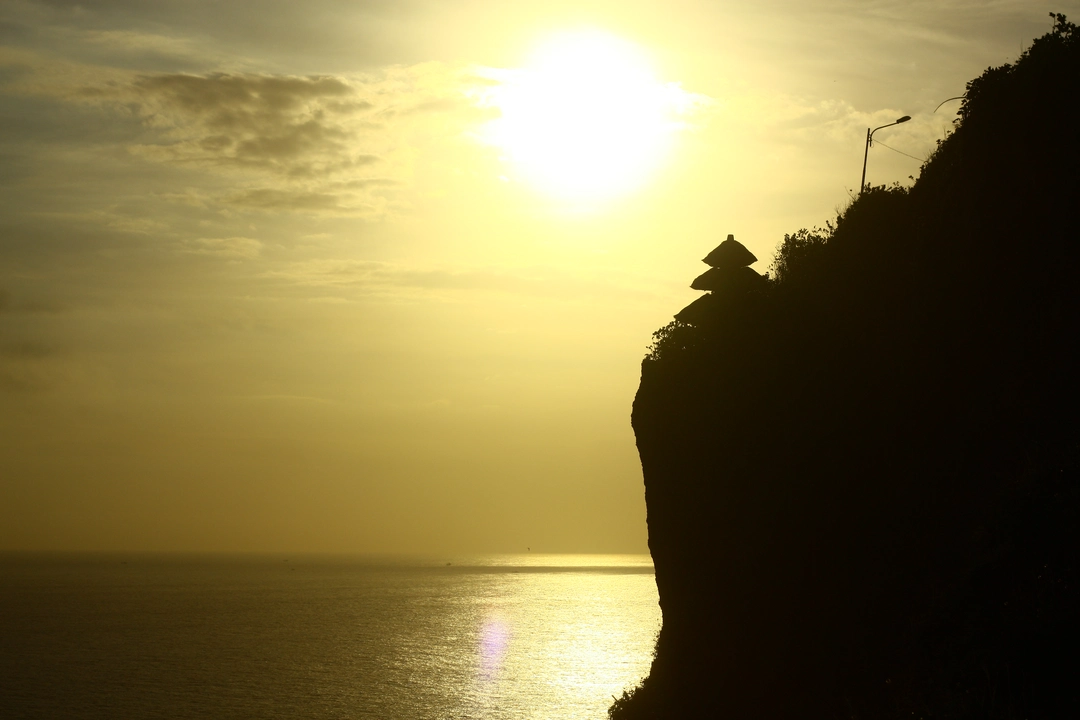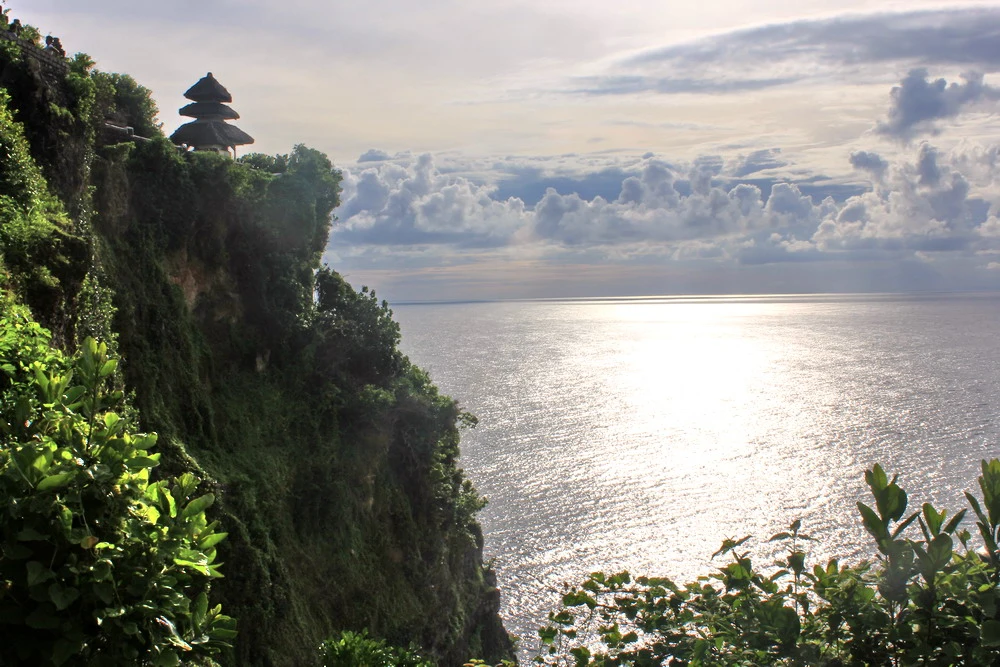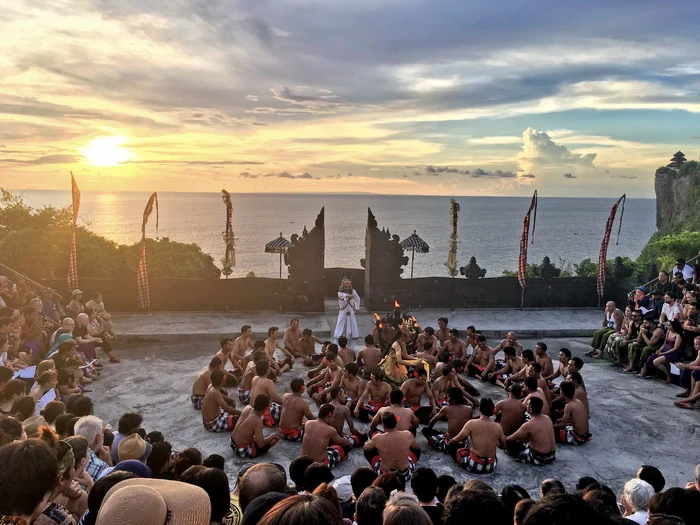Are you planning to visit the iconic Uluwatu Temple in Bali, famous for its breathtaking cliffside views, rich spiritual heritage, and vibrant cultural experiences? This guide is your ultimate resource for everything you need to know about Uluwatu Temple in 2025. From entrance fees to the must-see highlights, we’ll take you through the temple’s fascinating history, the unique attractions it offers, and essential tips for a seamless visit. Get ready to explore the magic of Uluwatu Temple and make the most of your Bali adventure.
Short History of Uluwatu Temple
Uluwatu Temple (Pura Luhur Uluwatu) is one of Bali’s six key temples, known as the Sad Kahyangan Temples, located on the island’s southwestern tip. The temple dates back to the 10th century and was originally established by a Hindu priest named Empu Kuturan. However, its most significant expansion came in the 16th century when the revered priest Dang Hyang Nirartha arrived in Bali. Nirartha enhanced the temple and established its sacred presence, believing it would protect Bali from evil sea spirits.
The temple’s location is symbolic, as it sits on a cliff that represents the union of the sea and the sky, two elements that hold great significance in Balinese Hinduism. Today, Uluwatu Temple continues to serve as a place of worship, offering spiritual guidance and protection to the island.
What Makes Uluwatu Temple Unique
Uluwatu Temple stands out among Bali’s sacred sites due to its extraordinary location perched on a dramatic cliff, soaring approximately 97 meters above the Indian Ocean. This unique setting provides unparalleled panoramic views and creates a spiritual ambiance that feels deeply connected to the natural world.
The temple’s main structure is designed in the classic Balinese meru style, characterized by a multi-tiered roof with three distinct levels. The temple’s design symbolizes its sacred purpose, dedicating it to Dewa Rudra, a manifestation of God linked to nature’s power.
Adding to its charm is the stunning craftsmanship displayed in its intricate carvings. Each detail tells a story, reflecting the artistry and cultural richness of Bali. The temple’s architecture harmonizes beautifully with its surroundings, making it not just a place of worship but also a masterpiece of spiritual and aesthetic design. Every corner invites exploration, offering glimpses into the island’s history and devotion.
What to See and Do at Uluwatu Temple
Uluwatu Temple is renowned for its breathtaking cliffside views that overlook the vast Indian Ocean. The temple offers picturesque island views, especially at sunset when the sky becomes a canvas of colors.
The temple itself is a stunning architectural masterpiece, with intricate carvings and details that reflect the artistry and spirituality of Bali. Visitors can explore the temple grounds, which are surrounded by lush gardens and pathways that wind through the cliffs. The surrounding area is also home to a population of long-tailed macaques that have become an iconic part of the temple’s atmosphere, adding a playful touch to your visit.
For those interested in culture, the Kecak Dance is a must-see performance. This dramatic dance is held at the temple in the late afternoon, with the performers dancing in sync while chanting the “cak” sound. Set against the dramatic backdrop of the setting sun, it’s one of Bali’s most iconic cultural experiences.
Take a moment to explore this: Temple Vibes & Sunset Feels: The Uluwatu Experience You Can’t Miss
Tips for Visiting Uluwatu Temple
Visiting Uluwatu Temple is not just about stunning views and cultural performances—it’s a journey into Bali’s spiritual heart. Make the most of your trip with these practical tips.
- Dress Code: As with most temples in Bali, visitors are required to wear a sarong and sash when entering Uluwatu Temple. These are often provided at the entrance if you don’t have your own. Modesty is key, so be sure to cover your shoulders and avoid wearing revealing clothing.
- Monkey Safety: Uluwatu Temple is home to a group of mischievous long-tailed macaques. People know these monkeys as playful but also opportunistic. They may snatch items like sunglasses, hats, or even food. So, please keep your belongings secure and avoid feeding the monkeys to prevent losing your items.
- How to Act: When visiting Uluwatu Temple, it’s important to be respectful of the sacred space. Follow the temple’s rules and remain quiet and calm during your visit. You can take photos, but avoid capturing ceremonies without permission.
Entrance Fee 2025
While the exact entrance fee for 2025 has yet to be officially announced, it’s expected that there may be a slight increase from the current price. As of 2024, the entrance fee to Uluwatu Temple is typically around IDR 30,000 to IDR 50,000, depending on your nationality and the time of year. It’s important to check closer to your visit to confirm the price and be aware that additional costs may apply for attending the Kecak Dance.
Keep in mind that the price may fluctuate for 2025, so be prepared for potential changes. Remember to bring cash, as ticket counters often don’t accept card payments. Having the exact amount or small denominations can make the process smoother.
Frequently Asked Questions (FAQ) about Uluwatu Temple
- Q: When is the best time to visit Uluwatu Temple?
A: The best time to visit Uluwatu Temple is during the evening as the sun sets. The vibrant colors of the sky create a breathtaking backdrop for the temple, making it a magical experience. Visiting in July or August offers sunny days and the best chance to see a spectacular sunset. - Q: Can I visit the temple during religious ceremonies?
A: Absolutely! Uluwatu Temple is an active place of worship, and visitors are welcome to observe ceremonies. However, it’s important to be respectful of the rituals and local customs. The temple holds significant traditional ceremonies called “Piodalan” or “Pujawali,” which are anniversary celebrations unique to Balinese temples. Witnessing one of these ceremonies can be a truly immersive cultural experience. - Q: How do I get to Uluwatu Temple?
A: Uluwatu Temple is conveniently located along the main coastal road, though it doesn’t have a specific address. When driving, look for the junction where Jl. Pantai Suluban transitions into Jl. Raya Uluwatu—you’ll spot a security post where you can pay for parking. If you’re coming from nearby areas like Uluwatu or Padang Padang, it’s just a short 2-minute drive. From Seminyak or Legian, it’s about an hour; while from Ubud, plan for a two-hour trip. Transportation options include renting a scooter for flexibility, hiring a private driver for comfort, or using an online motorcycle taxi (ojek) for convenience.
In Summary: What Should I Prepare for My 2025 Visit to Uluwatu Temple?
- Plan Ahead: Visit during the dry season, especially July or August, to enjoy sunny days and stunning sunsets.
- Dress Properly: Wear a sarong and sash, either your own or provided at the entrance, to respect the temple’s dress code.
- Sort Transportation: Rent a scooter for flexibility or hire a driver for comfort, keeping travel times in mind from popular areas.
- Respect Customs: Follow temple etiquette, remain calm, and be mindful of ceremonies during your visit.
- Be Monkey-Smart: Secure your belongings and avoid carrying food to steer clear of mischievous macaques.
- Carry Cash: Entrance tickets and other local expenses often require cash, so bring small denominations.
Let’s plan your trip: Uluwatu Sunset Kecak Dance Package
Conclusion
Uluwatu Temple is more than a destination—it’s an experience that blends breathtaking natural beauty with deep cultural significance. From the majestic cliffside views and enchanting sunsets to the mesmerizing Kecak Dance and playful monkeys, every moment spent here is unforgettable.
Thank you for reading this guide. We hope it helps you craft an unforgettable journey to one of Bali’s most iconic landmarks. Wishing you safe travels and countless memories along the way! – Kura Kura Bus



.webp)

.webp)



